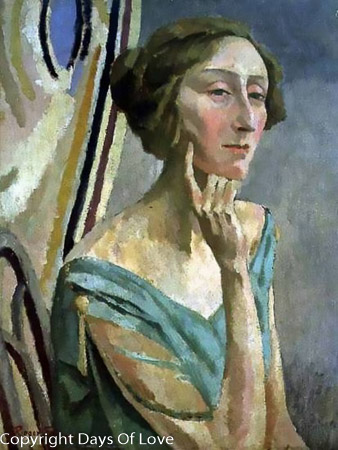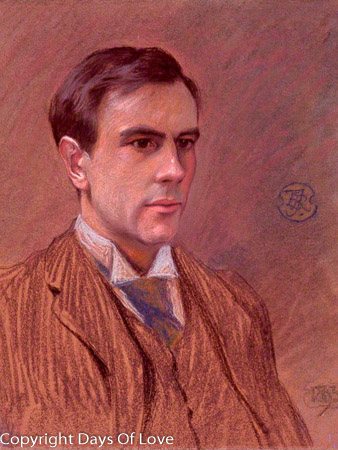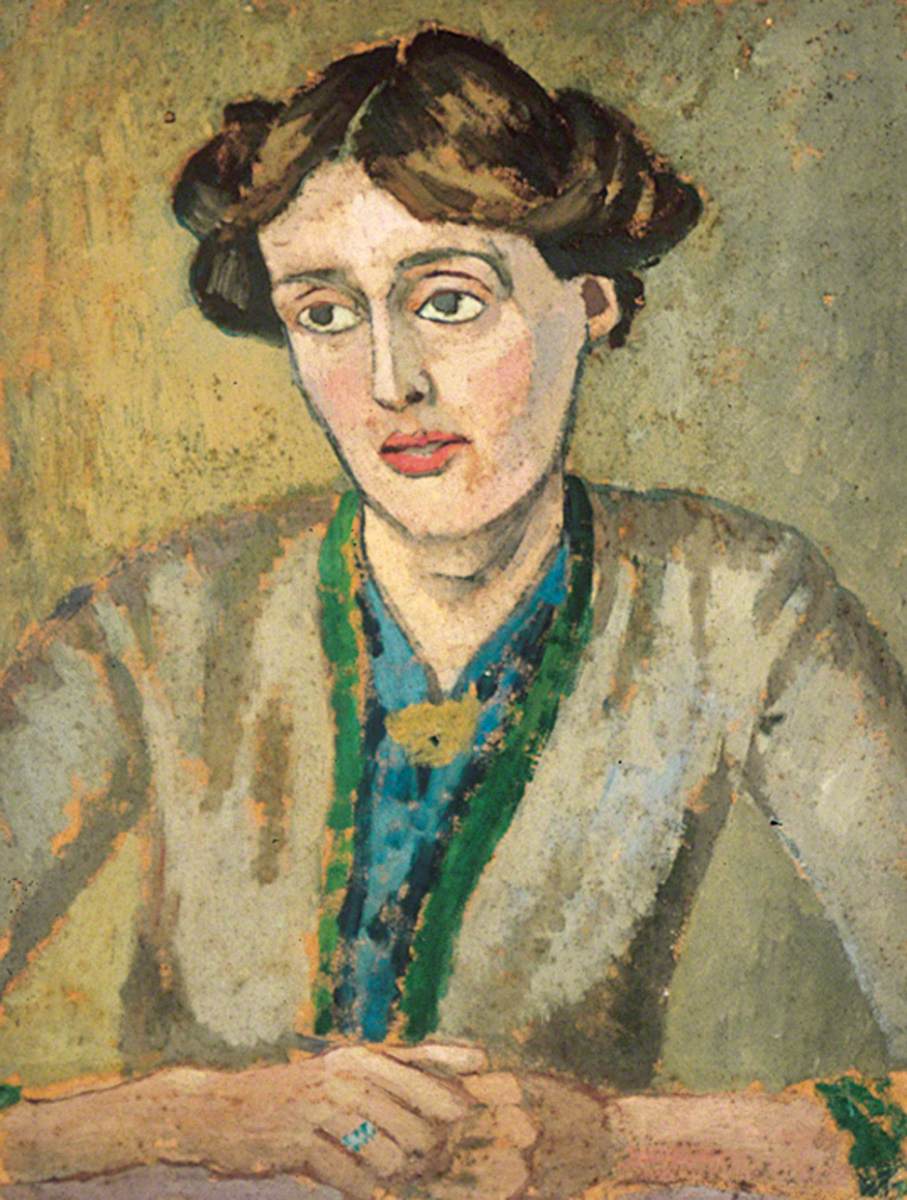Wife Helen Coombe
Queer Places:
6 The Grove, Highgate, Middlesex
Clifton College, 32 College Rd, Bristol BS8 3JH, Regno Unito
University Of Cambridge, Cambridge CB2, Regno Unito
Slade School of Fine Art, University College London, Gower St, Kings Cross, London WC1E 6BT, Regno Unito
Quince House, 37 Chantry View Rd, Guildford GU1, Regno Unito
21 Fitzroy Square, Kings Cross, London W1T 6EL, Regno Unito
33 Fitzroy Square, Fitzrovia, London W1T 6EU, Regno Unito
48 Bernard St, Bloomsbury, London WC1N 1LB, UK
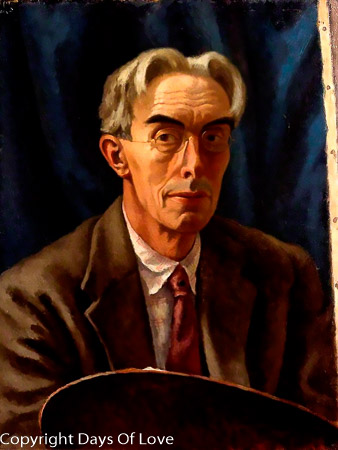 Roger
Eliot Fry (14 December 1866 – 9 September 1934) was an English painter and
critic, and a member of the Bloomsbury Group. He was part of the
Cambridge Apostles. Establishing his reputation as a
scholar of the Old Masters, he became an advocate of more recent developments
in French painting, to which he gave the name Post-Impressionism. He was the
first figure to raise public awareness of modern art in Britain, and
emphasised the formal properties of paintings over the "associated ideas"
conjured in the viewer by their representational content. He was described by
the art historian Kenneth Clark as "incomparably the greatest influence on
taste since Ruskin ... In so far as taste can be changed by one man, it was
changed by Roger Fry".[2]
The taste Fry influenced was primarily that of the Anglophone world, and his
success lay largely in alerting an educated public to a compelling version of
recent artistic developments of the Parisian avant-garde.[3]
Roger
Eliot Fry (14 December 1866 – 9 September 1934) was an English painter and
critic, and a member of the Bloomsbury Group. He was part of the
Cambridge Apostles. Establishing his reputation as a
scholar of the Old Masters, he became an advocate of more recent developments
in French painting, to which he gave the name Post-Impressionism. He was the
first figure to raise public awareness of modern art in Britain, and
emphasised the formal properties of paintings over the "associated ideas"
conjured in the viewer by their representational content. He was described by
the art historian Kenneth Clark as "incomparably the greatest influence on
taste since Ruskin ... In so far as taste can be changed by one man, it was
changed by Roger Fry".[2]
The taste Fry influenced was primarily that of the Anglophone world, and his
success lay largely in alerting an educated public to a compelling version of
recent artistic developments of the Parisian avant-garde.[3]
Goldsworthy Lowes
Dickinson had a satisfactory succession of young friends:
Roger Fry,
Ferdinand Schiller,
Oscar Eckhard,
Peter Savary, and others. One of his friends
writes that "each of us did his best in hi own way to assuage Goldie's
physical desires. His relationship with each ripened, after the passion had
subsided, into a lasting friendship."
Born in London, the son of the judge Edward Fry, he grew up in a wealthy
Quaker family in Highgate. Fry was educated at Clifton College and King's
College, Cambridge,[4]
where he was a member of the Conversazione Society, alongside freethinking men
who would shape the foundation of his interest in the arts, including John
McTaggart and
Goldsworthy Lowes Dickinson. After taking a first in the Natural Science
tripos, he went to Paris and then Italy to study art. Eventually he
specialised in landscape painting.

Helen Anrep
Duncan Grant (1885–1978)
Charleston
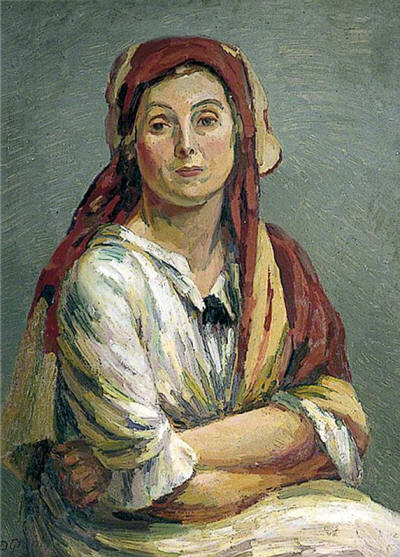
Helen Anrep in Turkish Costume
Duncan Grant (1885–1978)
Charleston
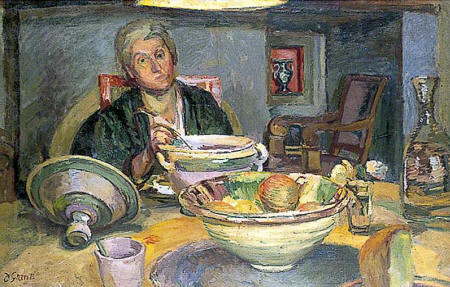
Helen Anrep in the Dining Room at Charleston, East Sussex
Duncan Grant (1885–1978)
Charleston
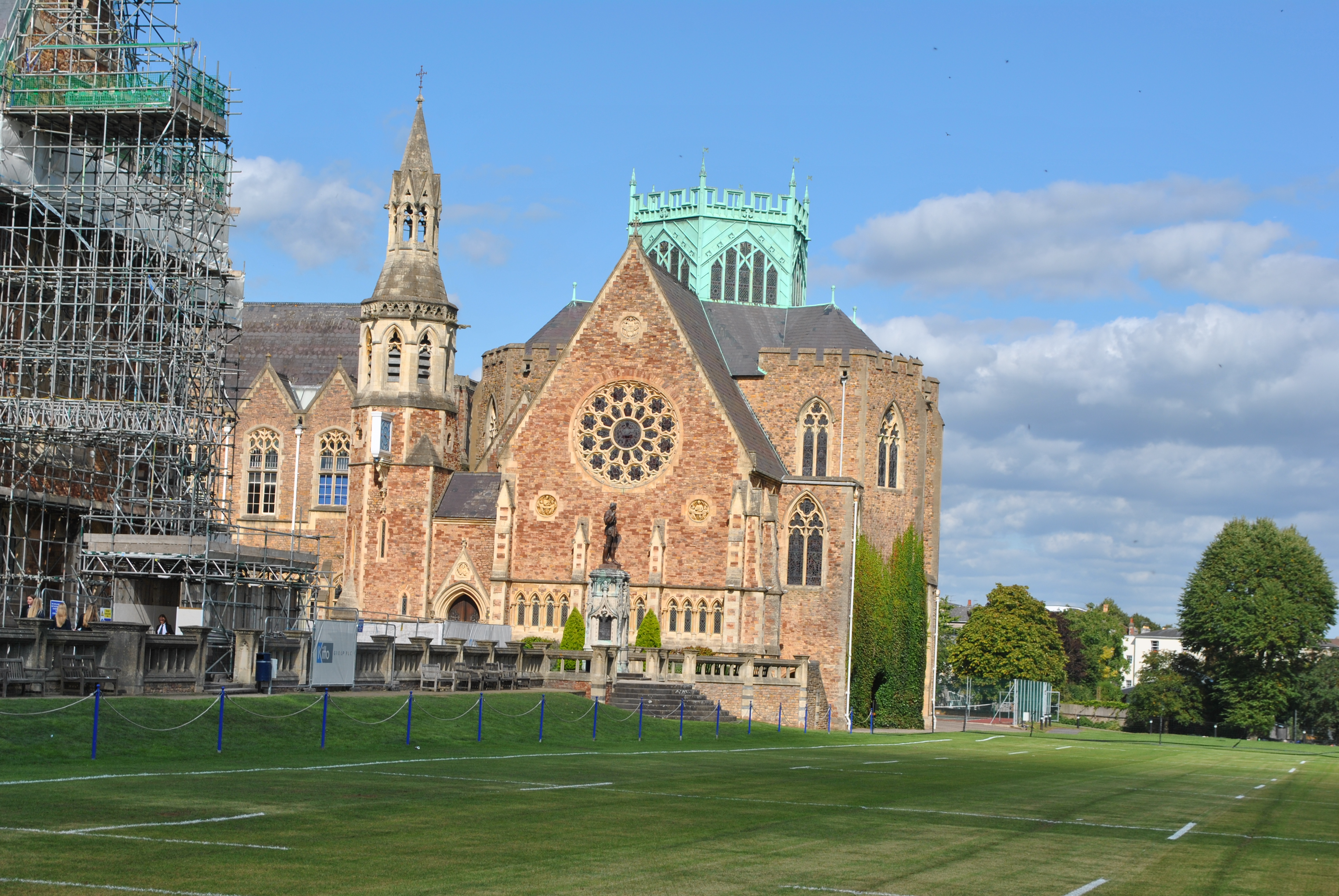
Clifton College, UK
In 1896, he married the artist Helen Coombe and they subsequently had two
children, Pamela and Julian. Helen soon became seriously mentally ill, and in
1910 was committed to a mental institution, where she remained for the rest of
her life. Fry took over the care of their children with the help of his
sister, Joan Fry. That same year, Fry met the artists
Vanessa Bell and her
husband Clive Bell, and it was through them that he was introduced to the
Bloomsbury Group. Vanessa's sister, the author
Virginia Woolf
later wrote in her biography of Fry that "He had more knowledge and experience
than the rest of us put together". In 1911, Fry began an affair with Vanessa Bell, who was recovering from a
miscarriage. Fry offered her the tenderness and care she felt was lacking from
her husband. They remained lifelong close friends, even though Fry's heart was
broken in 1913 when Vanessa fell in love with
Duncan Grant and
decided to live permanently with him.
After short affairs with artists
Nina Hamnett and
Josette Coatmellec, Fry too found happiness with Helen Maitland Anrep. She
became his emotional anchor for the rest of his life, although they never
married (she too had had an unhappy first marriage, to the mosaicist Boris
Anrep).
Fry died unexpectedly after a fall at his home in London. His death caused
great sorrow among the members of the Bloomsbury Group, who loved him for his
generosity and warmth. Vanessa Bell
decorated his casket before his ashes were placed in the vault of Kings
College Chapel in Cambridge.
Virginia Woolf was
entrusted with writing his biography,[5]
published in 1940.
My published books:


BACK TO HOME PAGE

- https://en.wikipedia.org/wiki/Roger_Fry
- Homosexuals in History, A Study of Ambivalence in Society, Literature
and the Arts, by A.L. Rowse, 1977
 Roger
Eliot Fry (14 December 1866 – 9 September 1934) was an English painter and
critic, and a member of the Bloomsbury Group. He was part of the
Cambridge Apostles. Establishing his reputation as a
scholar of the Old Masters, he became an advocate of more recent developments
in French painting, to which he gave the name Post-Impressionism. He was the
first figure to raise public awareness of modern art in Britain, and
emphasised the formal properties of paintings over the "associated ideas"
conjured in the viewer by their representational content. He was described by
the art historian Kenneth Clark as "incomparably the greatest influence on
taste since Ruskin ... In so far as taste can be changed by one man, it was
changed by Roger Fry".[2]
The taste Fry influenced was primarily that of the Anglophone world, and his
success lay largely in alerting an educated public to a compelling version of
recent artistic developments of the Parisian avant-garde.[3]
Roger
Eliot Fry (14 December 1866 – 9 September 1934) was an English painter and
critic, and a member of the Bloomsbury Group. He was part of the
Cambridge Apostles. Establishing his reputation as a
scholar of the Old Masters, he became an advocate of more recent developments
in French painting, to which he gave the name Post-Impressionism. He was the
first figure to raise public awareness of modern art in Britain, and
emphasised the formal properties of paintings over the "associated ideas"
conjured in the viewer by their representational content. He was described by
the art historian Kenneth Clark as "incomparably the greatest influence on
taste since Ruskin ... In so far as taste can be changed by one man, it was
changed by Roger Fry".[2]
The taste Fry influenced was primarily that of the Anglophone world, and his
success lay largely in alerting an educated public to a compelling version of
recent artistic developments of the Parisian avant-garde.[3]




